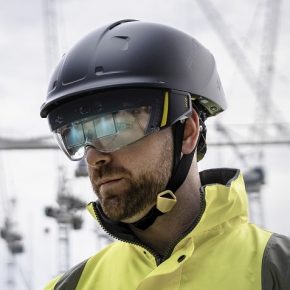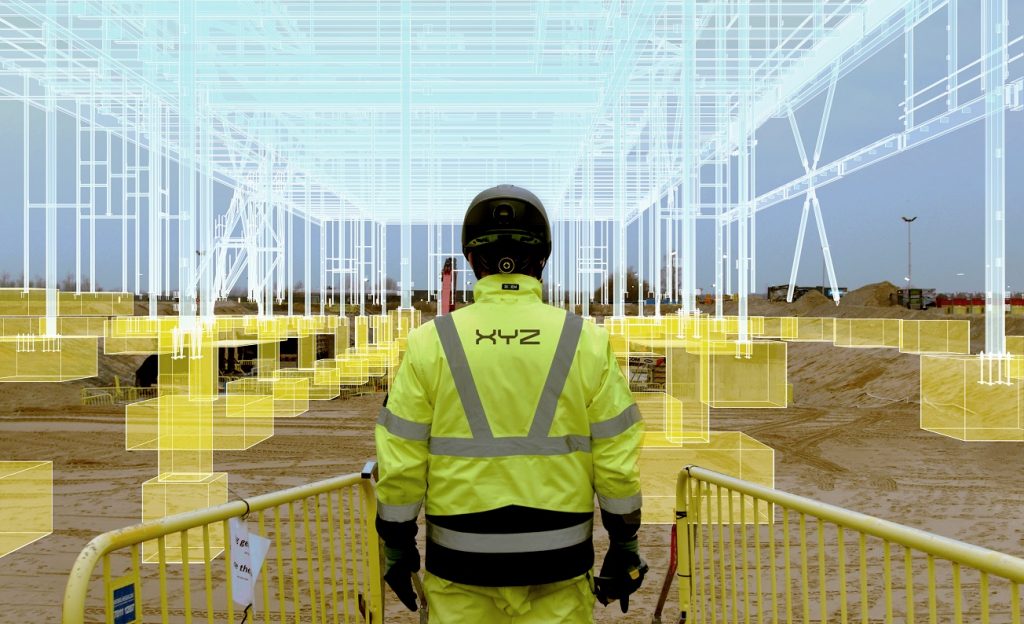
GUEST ARTICLE: A new age of construction – the power of interoperability
 This guest article from David Mitchell, CEO and founder of construction technology company XYZ Reality, looks at how the recent integration of new digital innovations within the construction industry are helping to improve the efficiency of on-site building.
This guest article from David Mitchell, CEO and founder of construction technology company XYZ Reality, looks at how the recent integration of new digital innovations within the construction industry are helping to improve the efficiency of on-site building.
“We live in an age where technological advancements have taken many industries, including construction, to new heights. Digital innovation is soaring, due to an increase in demand, and improving the efficiency of building across all stages of project delivery.
A 2017 report by Mckinsey Global Institute revealed digital transformation boosts productivity by as much as 15%. As sector leaders move closer to ‘construction 4.0’ by embracing smart technologies, there are still significant challenges to address, such as rework, which affect profit, waste resources and create unwelcome project delays that impact team culture and morale.
However, by using powerful tech solutions, including increasingly popular Building Information Modelling (BIM) and Asset Information Management (AIM) platforms, construction professionals can significantly boost efficiency. While there’s always room for improvement, as the construction industry grows, technology will be crucial to enabling expansion whilst maintaining high quality builds and remaining in line with sustainability goals.
Achieving interoperability between software and hardware can play a crucial role in unlocking the full potential of digital solutions. The integration and assimilation of tech stacks will be pivotal in helping professionals across the industry understand how their digital assets interact.
This will empower project teams both on and off-site to share and access critical data to make better decisions for improved outcomes. Seamless interoperability allows contractors and asset owners to drive maximum value and efficiency from investments.

Creating a digital ecosystem
Fortunately, a great deal of work is already underway to boost interoperability in construction. Online tools are now available which support professionals in breaking down existing siloes within businesses, creating more collaborative workspaces.
Intuitive, AI-backed file management platforms such as Autodesk’s Construction Cloud and BuilderTrend, for example, have made it possible for teams to approach projects holistically, incorporating a variety of tools and systems.
Crucially, improved interoperability allows all parties, from architects and engineers to construction workers and asset owners to access readily available information.
In practise, forging an interconnected system of information could involve AI-supported software and IoT-enabled devices to create a golden thread of information over time. This data means every amendment from start to finish during a project should be accounted for.
Interoperability ensures this data can be accessed and understood by everyone involved. With more information at their fingertips, teams can make better-informed decisions and look back to help understand where mistakes were made.
Combining segregated data into an easily accessible space can reduce errors and increase operational effectiveness. As a result, more cohesive workflow throughout projects means better informed workers and greater efficiency.
Improved efficiency and sustainability
Interoperability enables contractors to work more efficiently, with greater precision and consume fewer project resources. By connecting design tools like BIM with on-site digital tools, like Augmented Reality-enabled devices, to a construction management platform, developers can deliver projects with greater accuracy, visibility and efficiency.
Through the power of interoperable tech, on-site teams can validate work and make changes and decisions in real-time as work is happening. Sharing connected data and information is also useful for monitoring emission levels and informing effective methods to reduce them. This not only reduces the margin for error, but also results in lower carbon emissions and greater productivity through more streamlined processes.
Interoperability provides more than a means to save time in the short term. Firms and practices can begin to work collaboratively today to secure a green future for construction through greater operational agility.
A new era for construction
The construction industry is entering the next stage in its evolution, and leaders across the sector will need to invest in achieving interoperability to stay one step ahead.
We have seen the introduction of many useful technologies recently, but their full potential is yet to be realised. Digital innovation has allowed us to work more efficiently, and with improved information sharing we can further maximise the potential of readily available technology.
There is no doubt that collaboration is crucial to reduce misinformation across projects. With greater visibility and a more holistic approach to work, we can deliver higher quality projects while improving the industry’s green credentials.
Reducing or eliminating rework entirely, means projects will use fewer resources, have lower costs and take less time to complete. With an open-mind and willingness to integrate digital technologies into a shared ecosystem, the benefits to our industry will be limitless.
Latest news

26th July 2024
Enfield Speciality Doors completes world-class project for Atlas Copco HQ
A rundown office and warehouse building completely transformed into a modern headquarters for Atlas Copco has been fitted with more than 120 internal fire doors from Enfield Speciality Doors.
Posted in Access Control & Door Entry Systems, Articles, Building Industry News, Building Products & Structures, Building Systems, Case Studies, Doors, Interior Design & Construction, Interiors, Posts, Restoration & Refurbishment, Retrofit & Renovation, Security and Fire Protection, Sustainability & Energy Efficiency, Timber Buildings and Timber Products, Wooden products
26th July 2024
Abloy UK launches new white paper
Abloy UK, a leading provider of security and access control solutions, has launched a new white paper.
Posted in Access Control & Door Entry Systems, Architectural Ironmongery, Articles, Building Industry News, Building Products & Structures, Building Services, Doors, Facility Management & Building Services, Health & Safety, Information Technology, Innovations & New Products, Publications, Research & Materials Testing, Security and Fire Protection
26th July 2024
MCRMA Member Profile: David Roy, Director of Roofconsult
David Roy of MCRMA member company Roofconsult has more than 50 years’ experience to draw upon working in the building envelope sector and a unique perspective on how it has changed in that time.
Posted in Articles, BIM, Infrastructure & CAD Software, Building Associations & Institutes, Building Industry News, Building Products & Structures, Building Services, Building Systems, Cladding, Information Technology, Restoration & Refurbishment, Retrofit & Renovation, Roofs, Walls
26th July 2024
Strand: Enhancing Door Functionality and Safety
Craig Fox, Sales Director for Strand Hardware, outlines how door industry professionals might apply door limiting stays…
Posted in Architectural Ironmongery, Articles, Building Industry News, Building Products & Structures, Building Services, Doors, Facility Management & Building Services, Health & Safety, Restoration & Refurbishment, Retrofit & Renovation
 Sign up:
Sign up: